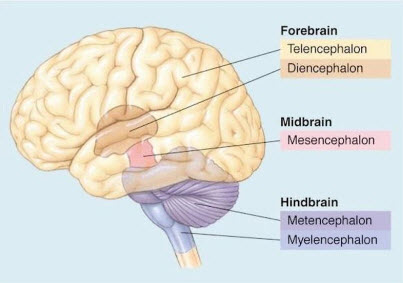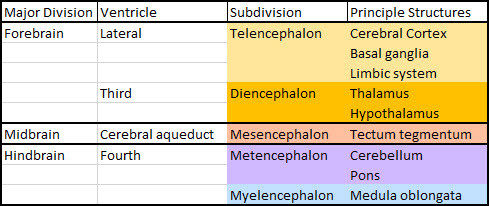Division of the Brain
The anatomy of the brain is complex due its intricate structure and function. This amazing organ acts as a control center by receiving, interpreting, and directing sensory information throughout the body. The brain and spinal cord are the two main structures of the central nervous system. There are three major divisions of the brain. They are the forebrain, the midbrain, and the hindbrain.
- The forebrain has two major parts called the diencephalon and the telencephalon. The forebrain is responsible for a number of functions related to thinking, perceiving, and evaluating sensory information.
- The midbrain, also called the mesencephalon, connects the hindbrain and the forebrain. It is associated with motor functions and auditory and visual responses.
- The hindbrain contains both the metencephalon and the myelencephalon. The hindbrain is associated with balance and equilibrium and the coordination of movement along with autonomic functions like our breathing and our heart rate.

